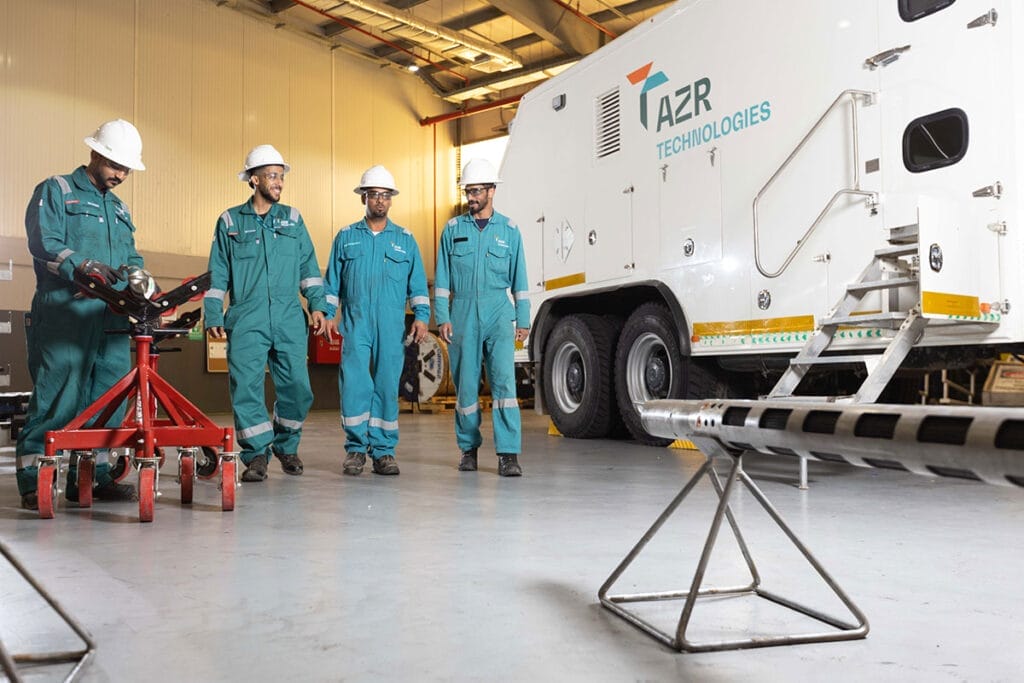Introduction to Wireline Technology
January 6, 2025 2025-04-23 9:59
Introduction to Wireline Technology
Wireline technology is a cornerstone of modern oil and gas operations, providing critical tools and techniques for subsurface data acquisition and well intervention. This technology plays a vital role in maximizing hydrocarbon recovery and ensuring the efficient and safe operation of wells. Its applications span exploration, production, and maintenance, making it indispensable in the energy sector.
Wireline technology involves the use of a cable system to lower tools into a wellbore for various purposes, including data collection, well logging, and intervention. The cable not only supports the tools but also transmits data and power between the surface and the downhole environment. This dual functionality makes wireline operations highly effective and versatile in meeting the demands of modern oilfield operations.
Historical Evolution
Wireline technology has evolved significantly since its inception. Initially developed for basic well logging, it has now expanded to include a wide range of applications such as perforation, plug setting, and fishing operations. The integration of advanced sensors, electronics, and computing technologies has further enhanced the precision and reliability of wireline services.
- Early Use: Initially focused on basic data collection and well evaluation.
- Modern Advancements: Integration of real-time data transmission and advanced imaging tools.
Components of Wireline Technology
Wireline systems consist of several key components that work together seamlessly to achieve operational objectives. These components include:
- Cable: A steel or fiber-optic cable that provides support and transmits data and power.
- Surface Equipment: Includes winches, drums, and control panels to manage cable deployment and data acquisition.
- Downhole Tools: Specialized instruments used for tasks such as logging, sampling, and intervention.
- Data Acquisition Systems: Advanced software and hardware that process and analyze the collected data.
Each component is crucial for the successful execution of wireline operations, and advancements in these areas continue to drive the technology forward.
Types of Wireline Operations
Wireline operations can be broadly categorized into two types: slickline and electric line (e-line) services. Each type has specific applications and advantages.
- Slickline Services:
Slickline is a single-strand wire used primarily for mechanical operations such as setting or retrieving tools in a wellbore. It is simple, cost-effective, and widely used for tasks that do not require data transmission. - Electric Line (E-line) Services:
E-line includes an electric cable capable of transmitting power and data. This is used for more complex operations, such as well logging, perforation, and real-time data acquisition.
The choice between slickline and e-line depends on the operational requirements and the specific challenges of the well.
Applications of Wireline Technology
Wireline technology has a diverse range of applications in the oil and gas industry. Its versatility makes it an invaluable tool for well evaluation, maintenance, and optimization. Key applications include:
- Well Logging:
Wireline tools are used to collect detailed information about the geological formations and fluid characteristics of a well. This data is essential for making informed decisions about well development and production. - Perforation:
Electric line systems enable precise perforation of the well casing to establish communication between the reservoir and the wellbore. - Plug and Pack Setting:
Wireline tools are used to set plugs and packers within the well, facilitating zone isolation and other operational needs. - Fishing Operations:
When equipment is lost or stuck in a well, wireline tools can retrieve it efficiently. - Fluid Sampling and Testing:
Wireline operations allow for the extraction of fluid samples and pressure testing to assess reservoir conditions.
Advantages of Wireline Technology
The widespread adoption of wireline technology is driven by its numerous advantages, which include:
- Versatility:
Applicable to a wide range of operations, from data acquisition to intervention. - Efficiency:
Enables rapid deployment and execution of tasks. - Precision:
Advanced tools and sensors provide highly accurate data. - Cost-Effectiveness:
Reduces downtime and operational costs by streamlining processes. - Safety:
Minimizes risks associated with manual interventions in challenging environments.
These benefits make wireline technology a preferred choice for operators aiming to optimize well performance and reduce operational costs.
Challenges and Limitations
Despite its advantages, wireline technology faces certain challenges that must be addressed to ensure optimal performance:
- Environmental Conditions:
High temperatures, pressures, and corrosive fluids in the wellbore can affect tool performance. - Cable Fatigue and Damage:
Prolonged use can lead to wear and tear, requiring regular maintenance. - Operational Complexity:
Requires skilled personnel and advanced planning to execute operations successfully.
Addressing these challenges requires ongoing research, innovation, and investment in training and equipment maintenance.
Future Trends in Wireline Technology
The future of wireline technology is shaped by advancements in digitalization, automation, and sensor technology. Emerging trends include:
- Real-Time Data Analysis:
Integration of artificial intelligence and machine learning to analyze data on the fly. - Advanced Imaging Techniques:
Enhanced resolution and 3D imaging for better subsurface visualization. - Fiber-Optic Technology:
Improved data transmission and reliability through fiber-optic cables. - Remote Operations:
Increasing use of remote monitoring and control systems to enhance safety and efficiency.
These innovations promise to further enhance the capabilities and applications of wireline technology in the coming years.
Environmental and Safety Considerations
Wireline technology has also made significant strides in addressing environmental and safety concerns. Efforts include:
- Minimizing Environmental Impact:
Using less invasive techniques and reducing emissions during operations. - Improving Safety Standards:
Incorporating fail-safes and remote monitoring to reduce risks to personnel.
By focusing on sustainability and safety, wireline technology aligns with the broader goals of responsible energy production.
Conclusion
Wireline technology remains a vital component of the oil and gas industry, offering unparalleled versatility, efficiency, and precision. Its applications in well logging, intervention, and maintenance have revolutionized how operators approach well management. While challenges persist, ongoing advancements in technology and practices continue to enhance its effectiveness and reliability. For anyone interested in the energy sector, understanding wireline technology is essential for appreciating its role in modern oilfield operations.
Watch the video to learn more:
https://youtu.be/0qgZyodWNZQ
Related Posts
Introduction to Wireline Technology
January 6, 2025 2025-04-23 9:59Popular Tags






























